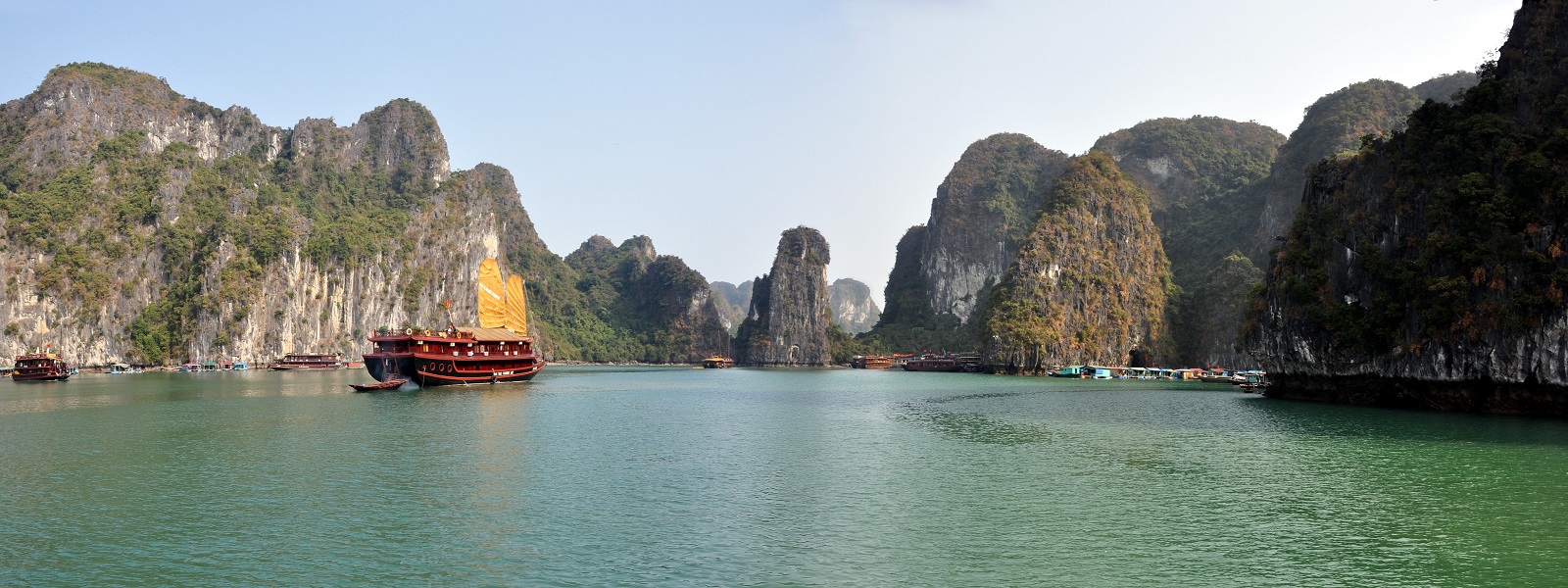
It has enough local charm and character to satisfy curious travelers for a day or two, if time allows.
Mui Ne is the name of a promontory, a famous destination of Phan Thiet City, Binh Thuan – Viet Nam, 22km from the center of Phan Thiet City. Mui Ne is a land where nature is extremely incentives, given the particularly favorable conditions for tourism development with the emerald green sea, iridescent gold sandy stretches untouched, brings an endless inspiration for photographers. Other attractions in the area include the white and red sand dunes, Po Nagar Cham Towers and Ocean Dune’s Golf Club, a 6746-yard par 72 course designed by Nick Faldo.
Climate:
The province is located in the tropical monsoon area with two distinct seasons. The wet season begins in May and continues to November, with June and August being the wettest months, whereas the dry season starts in November and lasts until April with late February to May seeing serious heat and humidity.
Best time to go:
Hot and humid year-round, the rainy season in Phan Thiet begins in May and runs through October, making the best time to visit from November to May.
Getting here:
Phan Thiet is a 5-hour-train ride from Ho Chi Minh City.
Vietnam has a tropical monsoon climate, dominated by the south or southwesterly monsoon from May to September and the northeast monsoon from October to April. The southern summer monsoon brings rain to the two deltas and west-facing slopes, while the cold winter monsoon picks up moisture over the Gulf of Tonkin and dumps it along the central coast and the eastern edge of the central highlands. Within this basic pattern there are marked differences according to altitude and latitude; temperatures in the south remain equable all year round, while the north experiences distinct seasonal variations.
In the past few years Vietnamese food has become more and more popular around the world. Food lovers may have tried the two best known Vietnamese dishes – spring rolls and bread rolls. Rice, noodles, fresh vegetable and herbs all play big roles in Vietnamese food, making it one of the healthiest cuisines in the world.
In Vietnam you’ll discover one unmistakable fact: Vietnamese people love noodles. They eat them every day, sometimes for every meal. Vietnamese noodles are made from a few basic ingredients, the most common being rice, wheat and mung beans, but a whole sub-cuisine is built on these basics.
91,500,000
Hanoi
Vietnamese
Voltage: 127V/ 220V, Frequency: 50Hz



We saw, learned, heard, tasted a lot and really got to know these 2 countries better. Thanks a lot for organizing our tour.
Mr Denis
My husband and I are now home and we'd like to thank you for an extraordinary trip in Vietnam and Cambodia. Thu, you did a terrific job in planning it and all details were perfect and everything happened like clockwork. We loved...
Fran O’Connell
We just got back. I can't begin to tell you how wonderful it was. We loved every place we stayed. You're a gem. As to the countries themselves: I was totally thrilled, fascinated, absorbed. Hope to do another trip to the...
Loraine F. Gardner
I wanted to specifically tell you how wonderful my tour guide Tien from Hue was. We were lucky enough to have him for Hue, Danang and Hoi An. He was sweet, caring, knowledgeable, dedicated and passionate about his country. I felt...
Dr. Halli Zung